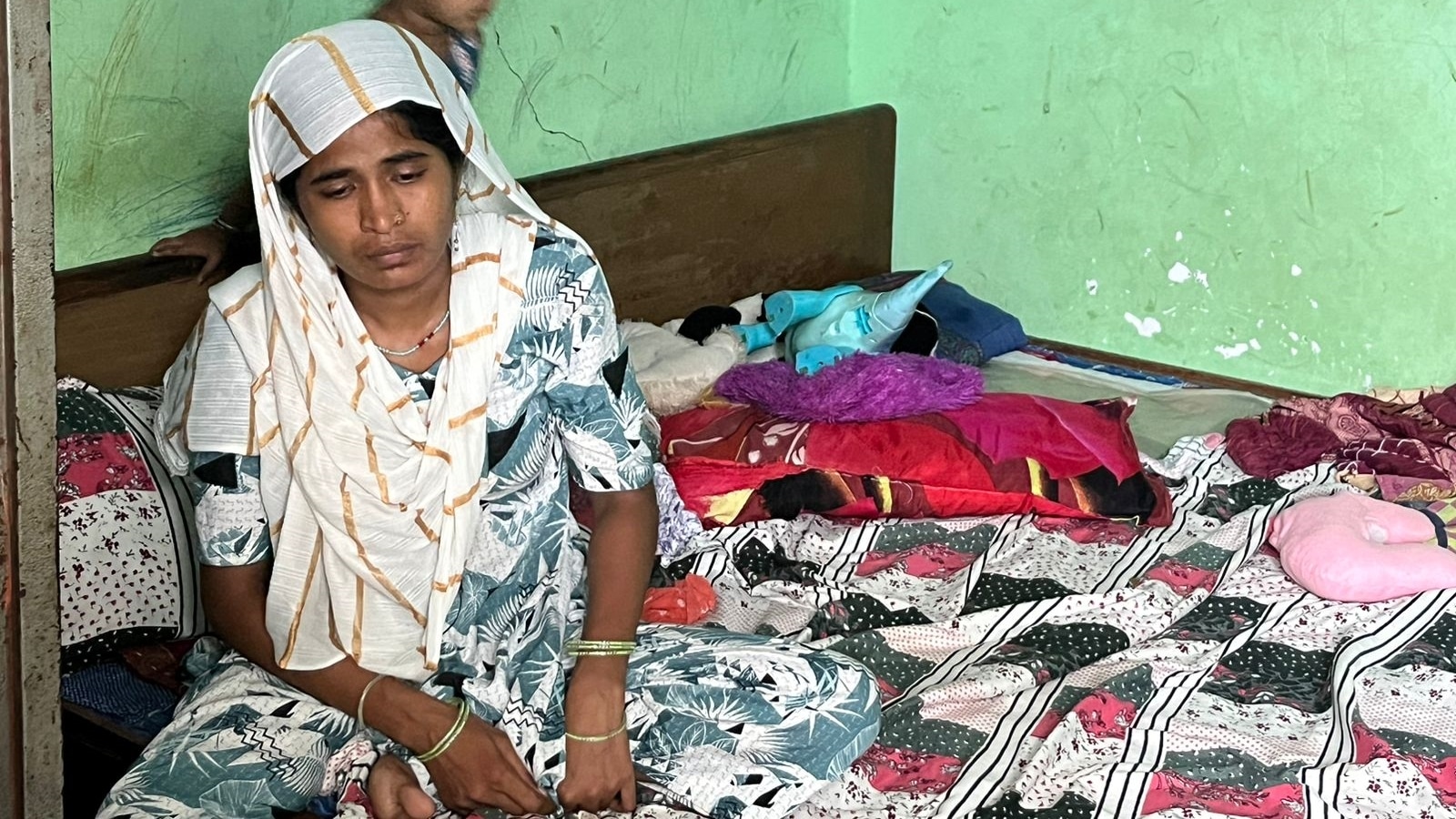 |
|
The article paints a heartbreaking picture of a family's devastation following a tragic road accident in Noida. Five-year-old Ayat lost her life when the scooter she was riding on with her father and uncle was struck by a speeding BMW. The incident occurred late Saturday night as Ayat's father, Gul Mohammad, an electrician, and her maternal uncle, Raja, a tailor, were taking her to a nearby hospital due to an insect crawling into her ear. What began as a minor health concern quickly spiraled into an unimaginable tragedy, leaving the family shattered and struggling to cope with the immense loss and the uncertain future. The narrative focuses on Tanjeela, Ayat's mother, as she grapples with the shock and grief of losing her only daughter. Her words, filled with despair and disbelief, offer a poignant glimpse into the depth of her pain. She describes the simple dreams they had for Ayat, planning to enroll her in school the following week, dreams now irrevocably shattered. The one-room rented house in Noida's Sadarpur Khajoor colony, a place already marked by poverty and hardship, now bears the unbearable weight of their sorrow. The details of their living conditions – the tightly packed lanes and shared washrooms – highlight the vulnerability of the family and the stark contrast between their humble existence and the careless actions that led to Ayat's death. Gul Mohammad and Raja are both critically injured. Raja, according to doctors, is in a coma, while Gul is in the ICU, unaware of his daughter's death. Tanjeela expresses her fear of informing him, knowing that the news will shatter him completely, potentially leading to a further decline in his already fragile state. This element adds another layer of complexity to the tragedy, as Tanjeela faces the agonizing dilemma of protecting her husband from the truth while simultaneously knowing that he will eventually have to confront the devastating reality. The article also touches upon the financial struggles of the family. Tanjeela and Gul had migrated to Noida from Bihar in search of work, hoping to build a better life for their children. They found a small corner for themselves in the crowded Sadarpur's Khajoor Colony, where Tanjeela works as a domestic help and Gul as an electrician. Raja, who accompanied them, provided further support. With Gul and Raja now incapacitated, Tanjeela is overwhelmed by the burden of hospital bills and the uncertainty of Raja's potential transfer to a government hospital. Her words, “Raja and Gul Bhai used to take care of everything… rent, expenses… everything,” reveal the extent of their reliance on the two men and the precariousness of their financial situation. The neighbor's statement, “Gul bhai loved the girl more than his life,” further emphasizes the profound loss experienced by the family. The emotional impact of Ayat's death is further amplified by Tanjeela's desperate plea, “Do bachche the… humse jitna paisa le lete, lekin meri bacchi ko kuch na karte (They could have taken all the money I had but not killed her).” This raw and heart-wrenching expression encapsulates the depth of her despair and the feeling of injustice that permeates the entire narrative. The article serves as a stark reminder of the devastating consequences of reckless driving and the disproportionate impact such tragedies have on vulnerable communities. It also highlights the challenges faced by migrant families in urban environments, where they often lack access to adequate resources and support systems. The story of Ayat's death is not just a news report; it is a poignant human drama that exposes the fragility of life and the enduring power of love and loss. The extended family is split into groups at hospitals and the mortuary, highlighting the logistical and emotional strain the accident has caused. They are “trying to be everywhere at once,” showcasing the collective effort to navigate the crisis and provide support to the grieving family. Shamad Ali, a cousin, mentions that Gul is stable but Raja remains unconscious, underscoring the severity of the situation and the ongoing uncertainty surrounding their conditions. Tanjeela's inability to obtain information from doctors or the police adds to her distress and feelings of helplessness. She laments not having seen her daughter and expresses the immense pain of losing her only daughter. The article effectively uses direct quotes and vivid descriptions to convey the emotional weight of the situation and create a sense of empathy for the family. The final line, “Will die a thousand deaths when he hears of our daughter’s passing,” captures the profound emotional toll the tragedy has taken and the agonizing anticipation of breaking the devastating news to Gul. The inclusion of the photograph from X (formerly Twitter) further reinforces the reality of the event and adds a visual dimension to the narrative. Overall, the article is a compelling and emotionally resonant account of a family's tragedy, highlighting the devastating consequences of reckless driving, the vulnerability of migrant communities, and the enduring power of love and loss in the face of unimaginable grief.
